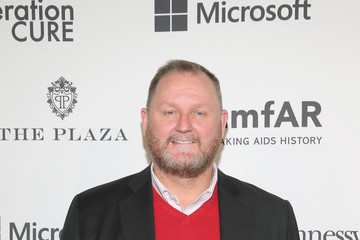
13 Feb Telluride AIDS Benefit: The State of AIDS
This story about “The State of AIDS” was written by Kevin Robert Frost, Chief Executive Officer of amFAR, the Foundation for AIDS Research.

Kevin Robert Frost of amFAR
As we enter the 35th year of the AIDS epidemic, there’s good news and there’s bad news. Let’s start with the good. If you’re diagnosed with HIV today, it’s by no means the life-ending calamity it once was. Chances are your doctor will put you on a cocktail of powerful drugs that will keep the virus in check and, if you take your meds as prescribed, enable you to live a relatively healthy life. What’s more, being on treatment will practically eliminate your risk of transmitting the virus to someone else.
Worldwide, a whopping 15 million HIV-positive people are now on treatment—a number that was unthinkable ten years ago. This is in large part due to the extraordinary success of programs like the U.S. taxpayer-funded President’s Emergency Fund to Fight AIDS Relief (PEPFAR), and the Global Fund to Fight AIDS, Tuberculosis and Malaria. Overall, the rate of new infections is slowing in many parts of the world and AIDS-related deaths have declined by 35% since 2005 to 1.2 million in 2014.
Cities such as New York and San Francisco have had considerable success at reducing infection rates and have plans to end the AIDS epidemic by 2020. In part, this involves promoting the use of a now widely available preventive pill called PrEP among populations at high risk of infection, such as gay men and minorities.
The bad news? Some U.S. cities at the other end of the spectrum have failed catastrophically to curb their epidemics. Washington, DC, capital city of the wealthiest nation on earth, has an HIV infection rate that rivals some of the hardest hit regions in Africa. The U.S. epidemic is characterized by stark racial disparities. Despite comprising just 13 percent of the population, African Americans account for nearly half of all new HIV infections. The CDC estimates that one in three black gay men in major U.S. cities is HIV positive.
We are not doing a good job of taking common sense measures to prevent infection. Rural Indiana last year experienced a shocking surge in HIV infections that led the state to declare a public health emergency. Close to 200 cases were recorded in Scott County, all attributable to injection drug users sharing contaminated needles. The tragedy is that these infections could easily have been prevented. Syringe exchange programs have reduced HIV infections among New York City’s drug-using population almost to zero. Until the Scott County outbreak, there was just one such program in the entire state of Indiana; in 17 states, there are none at all.
Many elected officials continue to object to syringe exchange on ideological grounds even though these programs are proven to be effective at preventing the spread of HIV without increasing drug use and are extremely cost-effective, saving taxpayers millions of dollars. With the startling increase in injecting drug use—both heroin and prescription opioids—in the U.S. in recent years, it’s just a matter of time before we see other outbreaks like the one in Scott County.
Worldwide, while putting 15 million HIV-positive people on treatment is a remarkable achievement, treatment remains out of reach for more than 20 million others. In the face of irrefutable evidence of the benefits of early treatment, the World Health Organization in 2015 changed its treatment guidelines to recommend that anyone who is HIV positive should be put on medication as soon as possible after diagnosis instead of waiting for signs of immune system deterioration…


Sorry, the comment form is closed at this time.